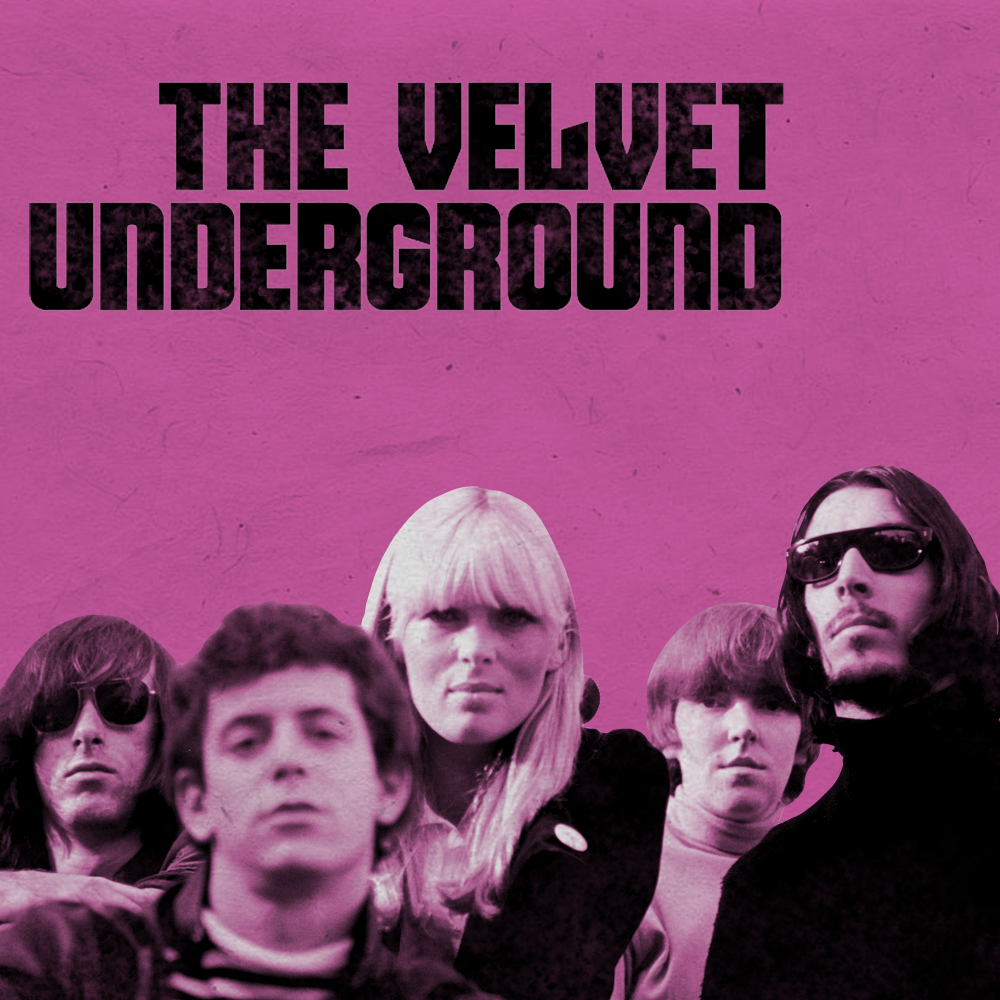The Velvet Underground: Meditations

My first memory with The Velvet Underground was in tenth grade during the springtime. I sat on my couch and looked out to the backyard, watching the sun slide through the sky. The stone of the patio was soaked in a darker tone from the earlier rain. Rainwater rolled down the vines and pine needles into big globs until they fell. “Sunday Morning” was playing. I can’t remember if the sun was going up or down, I can only remember the wetness outside and the fuzzed out sound of the celesta playing that unforgettable line.
Since then, I’ve come to fall in love with the entire catalogue that the group produced. It doesn’t feel right to gush about anything, but if I have to gush about something, it's The Velvet Underground. It feels like the start of everything in the world. Just today I threw on “Guess I’m Falling in Love” and it made walking feel better. Between this and waking up to a poster of the group in my room every morning, news of a new film on the group had me beyond excited.
Todd Haynes’ new Apple TV documentary on the rock group, aptly titled The Velvet Underground, takes an experimental approach at understanding an experimental band. The documentary rarely uses any live footage of the band, mainly because there isn’t any. The band was not well documented, which is mainly because nobody liked them enough to do so. Haynes solves this the same way the band dealt with their sounds: combining elements of popular culture with that of the absurd, building an assemblage on American culture as a whole. The documentary combines home footage, photography, experimental short film, and other visuals to synthesize an image of the group.
More than a documentary, The Velvet Underground is a meditative statement on the band and the ideas that surrounded it. In the mid to early sixties, as experimental composer and eventual group member John Cale moved to New York, a drone music scene was emerging. The documentary’s time spent on this event, including its discussion of frequencies, the importance of extended time, and other physiological effects of music stand out as a high point of the film. Other moments, like hearing about Lou Reed’s time with The Jades as a teenager entering the music industry, give insight into the enigmatic story of sound that Lou and the group left behind. I’ve been listening to “Your Love” on repeat since I finished the documentary, hearing glimpses at the Lou yet to come in the opening line: “I never thought I was a real whole man ‘til your love.”
Haynes’ ability to extrapolate meaning through this work of compilation is amazing. By holding the band in such an elusive light, the film made me think about how listening to The Velvet Underground has changed. Their music, including outtakes and a growing plethora of live recordings, have been available to me since I first heard the band’s name. To people in the eighties, for example, this was not the case. The band barely sold any records, making their circulation limited, and they disbanded within five years of their first album. I remember someone saying they’d known about the band for years before they ever heard a song. This inaccessibility sends the band to a level of myth, where the music was limited and listening to anything was a focused experience.
When I think of the world before the digital age, I feel a sense of being trapped. I recently watched a Seinfeld episode where George has to go to a funeral, and I fell into thought. With it being the early 90s, George couldn’t pull out his phone and text Jerry what was going on. He was stuck in that funeral with no connection to the outside world. This sort of disconnect, which is easy to romanticize today, changed how people listened to music, saw movies, and read books. When I imagine what it would have been like to throw on such mind-blowing records as those The Velvet Underground made, my head stops functioning. It is a situation that doesn’t make sense, something that I could never experience today. This magical, hypothetical feeling isn’t something that I ache over, but rather something that's existence I admire.
The Velvet Underground concludes with sweeping images of band mates, relevant creatives, and other people central to the story of the group. Two of the band members, Lou Reed and Sterling Morrison, have passed on, as have many of the other figures in the documentary. To experience this documentary, and learn that the people who filled me with lightning in the previous two hours are either dead or on their way to being so is a scary feeling. Will such groundbreaking musicians and idealists come around again? Will it happen in my lifetime? It is not our job to ask such questions, but rather to question the conventions that surround us, just like Lou and The Velvets did half a century ago.
Written by: Rory Donohue
Art by Cassidy Elibol


